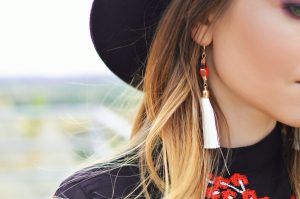The Psychology of Color: What Your Wardrobe Reveals
In the world of fashion, we often hear phrases like “black is slimming” or “red is a power color”. But have you ever stopped to think about why certain colors evoke certain emotions or convey certain messages? The psychology of color is a fascinating and complex topic that has a powerful influence on our wardrobe choices. In this article, we’ll take a deep dive into the psychology of color and explore what your wardrobe reveals about you.
The Basics of Color Psychology
Color psychology is the study of how colors affect human behavior, emotions, and thoughts. It’s a widely studied field that has been used in marketing, branding, and design to create specific reactions and associations in the minds of consumers. The concept of color psychology is rooted in the idea that color is not just a visual stimulus but also has a significant impact on our cognition and behavior.
The Power of Primary Colors
Primary colors, which include red, blue, and yellow, are the building blocks of color psychology. These colors have a powerful impact on our emotions and are often associated with certain traits or characteristics. For example, red is commonly associated with energy, passion, and excitement, while blue is associated with calmness, trust, and intelligence. Yellow is often associated with happiness, optimism, and creativity.
These primary colors can also have different meanings and connotations in different cultures. For example, in Western cultures, white is associated with purity and innocence, while in Eastern cultures, it symbolizes mourning and death.
The Influence of Secondary Colors
In addition to primary colors, secondary colors, which are created by mixing two primary colors, also play a significant role in color psychology. Green, for example, is a secondary color that is often associated with nature, growth, and balance. Purple, on the other hand, is often associated with luxury, creativity, and royalty.
Similar to primary colors, the meaning and perception of secondary colors can vary depending on cultural and personal experiences. For example, orange may represent warmth and vitality in one culture but may be associated with caution and danger in another.
Your Wardrobe and Your Personality
Now that we’ve covered the basics of color psychology, let’s delve into what your wardrobe reveals about your personality. The colors you choose to wear can give insight into your mood, temperament, and even your values.
Black
Black is a color that is often associated with sophistication, power, and mystery. Those who frequently wear black may be seen as strong and authoritative individuals. It can also indicate a desire to blend in or make a subtle statement.
White
White is a color that is often associated with purity, cleanliness, and simplicity. People who frequently wear white tend to be organized, detail-oriented, and often strive for perfection. It can also signify a desire for a fresh start or a clean slate.
Red
As mentioned earlier, red is a color often associated with energy and passion. People who frequently wear red may be seen as confident, outgoing, and bold. It can also signify a strong sense of self and a desire for attention and recognition.
Blue
Blue is a color that is often associated with stability, trust, and calmness. People who frequently wear blue may be perceived as reliable, dependable, and trustworthy. It can also signify a desire for peace and harmony.
Yellow
Yellow is a color that is often associated with happiness and optimism. People who frequently wear yellow may be seen as cheerful, outgoing, and creative. It can also signify a desire to stand out and make a statement.
Green
Green is a color that is often associated with growth, harmony, and balance. People who frequently wear green may be seen as down-to-earth, calm, and balanced individuals. It can also signify a connection to nature and a desire for stability and growth.
Purple
Purple is a color often associated with luxury, creativity, and ambition. People who frequently wear purple may be perceived as ambitious, unique, and imaginative. It can also signify a desire to stand out and make a statement.
Conclusion
The colors we wear can reveal a lot about our personality, mood, and values. Understanding the psychology of color can help us make intentional wardrobe choices and even influence how others perceive us. So next time you’re getting dressed, think about what message you want to convey with your favorite color.
Remember, color psychology is not an exact science, and everyone may have their own interpretation and associations with certain colors. However, understanding the basics can help you harness the power of color to make a statement with your wardrobe.











